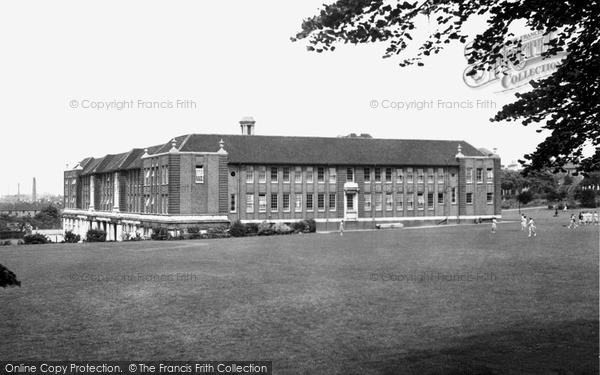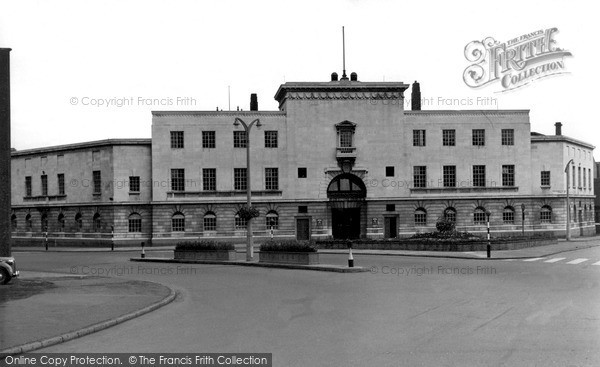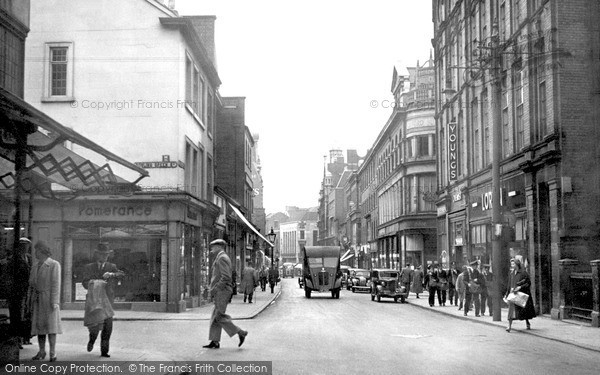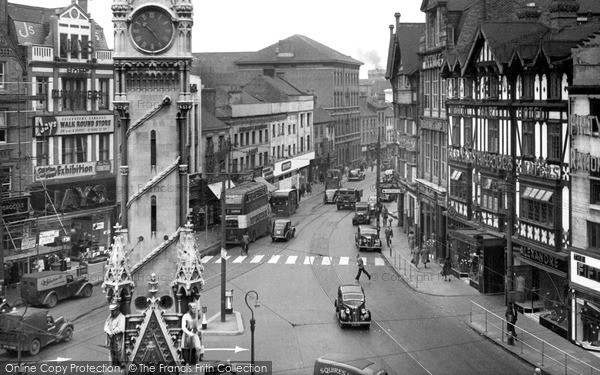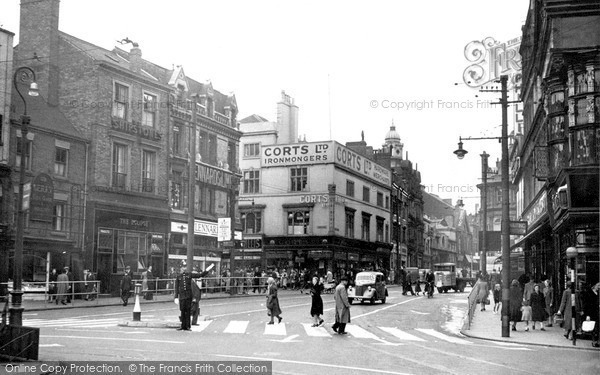Leicester History
The history of Leicester and specially selected photographs
The busy modern city of Leicester stands on historic foundations. It was the ‘civitas’, or capital, of a Celtic tribe, and was called Ratae Coritanorum by the Romans, who also had an important settlement here; the Jewry Wall is believed to date from AD130, and excavations have revealed a public bath and shops.
After the Norman Conquest a castle was built here, but it was destroyed in 1173, along with the rest of the town, during a rebellion against Henry II by two of his sons, Richard (the ‘Lionheart’) and John. The Earl of Leicester joined the rebels, but the king won. The earl fled to France, and the king took a savage revenge against Leicester, leading to the deaths of many of the citizens. The earl was later allowed to return and rebuilt the castle, but all that survives is the motte and the Great Hall, which dates from the late 12th century. St Mary de Castro, the church of the castle, is basically Norman, and St Martin’s Cathedral has its origins in a 13th-century church.
Leicester was the venue in 1426 of the intriguingly named Parliament of Bats. The king at the time, Henry VI, was an infant, and there was great tension between the Duke of Gloucester, the king's uncle and regent, and Cardinal Beaufort, the Bishop of Winchester and off-and-on Lord Chancellor. The name is derived because the members were forbidden by the Duke of Gloucester to carry swords into the parliament, but they were so concerned that violent disagreement might ensue that they armed themselves with clubs, or bats. This session of parliament also saw the infant king knighted in the church of St Mary de Castro.
A plaque on Bow Bridge records a supposed prophesy that was given to King Richard III as he left Leicester on his way to his death at the battle of Bosworth in 1485. Richard's spur is said to have struck the parapet when crossing, causing a bystander to predict that his head would later do the same, and this came true two days later, when the dead king’s body was brought back to Leicester, dangling across a horse's back - as the horse crossed the bridge, the king’s head did indeed hit the parapet. The king’s body was buried in the church of the Grey Friars friary at Leicester, but his burial place was lost following the dissolution of the friary in the 16th century, and subsequent development of the site. In 2013, an archaeological excavation of the area resulted in the discovery of a complete skeleton of a male showing severe scoliosis and major head wounds. The skeleton was identified as King Richard’s after comparing the DNA of the remains with two known descendants of Richard III’s sister, Anne of York.
Early travellers to Leicester were not impressed. The diarist John Evelyne called it an ‘old and ragged Citty…despicably built’ in 1654, and a little later Daniel Defoe condemned it as ‘an old stinking town’. The side-saddle traveller Celia Fiennes liked it better in 1698: ‘Leicester town stands on the side of a little riseing ground tho’ at a distance from the adjacent hills it looks low, but it’s a good prospect; it has 4 gates, the streets are pretty large and well pitch’d, the Market place is a large space very handsome with a good Market Cross and Town Hall.’
Even before the Industrial Revolution, Leicester had a thriving hosiery industry. When Daniel Defoe travelled around Britain in the 1720s he commented: ‘Leicester is an ancient, large and populous town, containing about five parishes, and stands on the River Soar. They have considerable manufacture carried on here, and in several of the market towns round for weaving of stockings by frames, and one would scarce think it possible so small an article of trade could employ such multitudes of people as it does; for the whole county seems to be employed in it.’ During the 18th century turnpiking improved access by road, particularly to and from London, and in 1774 Leicester was opened up when its medieval gates were demolished. However, Leicester’s development from a small county town into the sprawling industrial city of today was prompted by the construction of the Grand Union Canal in the 1790s, linking Leicester to London and Birmingham, and the coming of the railway in the 19th century.
The census of 1801 showed Leicester’s population to be around 17,000 people. The hosiery industry flourished, and Leicester continued to expand, aided by the successful boot and shoe and engineering industries.
Leicester grew rapidly in the 18th and 19th centuries, but it continued to be governed from its small medieval Guildhall until 1876. A visit to the Guildhall is worthwhile, to see the amazing 14th-century timbered Great Hall of the Corpus Christi Guild, a powerful guild of local businessmen and gentry. The Corporation bought the building in 1548 when the Guild was dissolved, for the sum of £25 15s 4d! Since then the Guildhall has had many uses, and survived calls for its demolition as an eyesore in the early 20th century, but is now in safe hands as a performance venue and museum. The Guildhall is also reputed to be Leicester’s most haunted building, boasting a total of five different ghosts.
A famous landmark of Leicester’s city centre is the Gothic Clock Tower, which was designed by local architect Joseph Goddard in 1868, and is decorated with pinnacles and canopies, along with representations of four Leicester worthies: Alderman Gabriel Newton, Simon de Montfort, William Wyggeston, and Sir Thomas White, one-time Mayor of Leicester and landlord of the nearby Horse and Trumpet. Simon de Montfort was the 1st Earl of Leicester and led a successful revolt of the barons against Henry III. The Parliament that de Montfort summoned in 1265 set a precedent for future relations between the English monarch and subjects.
Thomas Cook started his successful travel business from a building overlooking Leicester’s Clock Tower in 1841. A spectacular new front was added to the building in 1894, recording that from these offices Mr Thomas Cook arranged the world’s first cheap day rail excursion (to Loughborough) in 1841, and went on to provide affordable travel for ordinary people, both at home and on the continent.
Leicester is renowned for its flamboyant Victorian architecture, some of the superb buildings of this period being the former Midland Bank (HSBC), the Turkey Cafe, and the Singer Building. Next time you are passing the HSBC bank in the city centre, on the corner of Granby Street and Bishop Street, look out for the monsters which crawl over the walls of the building. These are the work of the stonemason Samuel Barfield, who often worked with the architect of the building, Joseph Goddard, who also designed the Clock Tower and the Thomas Cook Building. The building was originally the Leicestershire Bank, and was built in 1874 in Venetian-Gothic style with French pavilion roofs. It is one of the best examples of the superb Victorian architecture for which Leicester is famous.
Leicester gained city status in 1919.
In the second half of the 20th century Leicester suffered from war damage and industrial decline, but is now moving forward into the 21st century as a vibrant modern city with a large immigrant population, and an enviable reputation for intercultural harmony. Life in Leicester has been greatly enriched by the diversity of the festivals and cultures of its citizens, such as the Diwali lights, the Caribbean Carnival and the fruit and vegetables from all over the world that can be found at Leicester Market, the largest covered market in Europe. One of the joys of visiting Leicester is the chance to sample one of the city’s famous Indian restaurants, many of which are to be found along Belgrave Road.
Further Reading
To discover the histories of other local UK places, visit our Frith History homepage.



